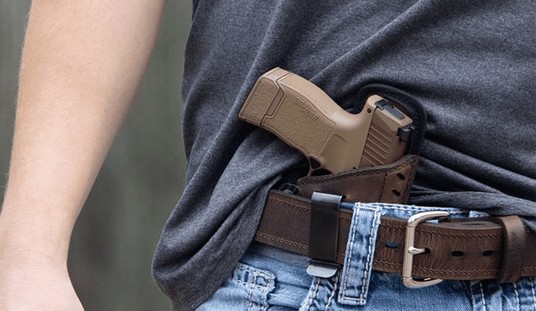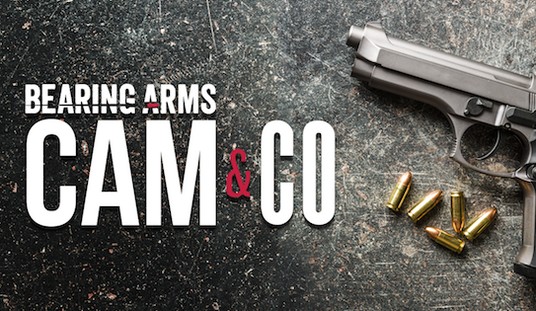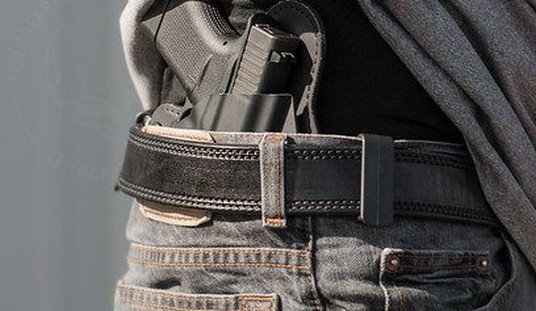
At a recent meeting, another attendee commented to me that she is currently unable to shoot due to an injury to her dominant-side right arm. (I specifically avoid the terms “strong side” and “weak side” as I don’t think it’s beneficial to worry that you’re using your weak hand when you’re in a fight for your life or those of your loved ones.)
When I asked her if she could not shoot with her non-dominant left hand, I could not tell who was more surprised – she, that I should suggest that concept, or I, that my question should surprise her.
Aside from the legal issues surrounding the use of deadly force, one of the most important concepts that I took from my earliest training from Massad Ayoob was the need to be able to shoot a handgun – reliably – with either hand. (By extension, that also includes being able to shoot a long gun off either shoulder.)
There are two components to this concept so I’ll start with the simpler one: If your dominant hand or arm is incapacitated by surgery or by an injury incurred outside the context of a fight for survival, your transition will be much easier if you already have available the skills and equipment for using the non-dominant hand. Are you able to work all the controls on your handgun, one-handed, with your secondary hand? Do you own a holster and related equipment, such as carriers for spare ammo, suitable for that operation? If you intend to use a pistol, are you able to charge the magazines with only one hand?

Turning to the uglier scenario, if your dominant hand or arm is incapacitated during a fight, do you have the skills and equipment to finish the fight with your non-dominant hand? For several years, I taught a couple of drills – designed around police duty holsters – involving drawing firing and reloading, first with only the dominant hand, then with only the non-dominant hand. These are worthwhile skills to build but I came to realize two things about those drills. First, they involve enough added time that they ought not to be taught without at least the simulated use of cover – a principle that I actually favor for any reloading. Second, they are not always practical with holsters designed for discrete carry. In the latter regard, I came increasingly to advise my students and readers to carry a minimum of two handguns, with one readily accessible to either hand.
[article continues on next page]
Let’s move on to some fairly general concepts of teaching your untrained hand to shoot:
- First and foremost, if you’re not already doing it, it’s much wiser to learn to operate a deadly weapon with the “new” hand under the watchful eye of an appropriate instructor. Curiously, for this first stage, a basic pistol instructor may be appropriate, if he is accustomed to teaching newbies.
- Second, I see some value in learning to shoot two-handed with the non-dominant hand as I prefer to shoot around the right side of cover with the right hand and around the left side of cover with the left hand. I also feel that, for those who can, it’s worth the time to learn to use the left eye when shooting left-handed and the right eye when shooting right-handed. Both of these skills – applied correctly – will lessen the amount of your body and head that you expose when shooting around cover. If you prefer a pistol, note that the thumb of your dominant hand is programmed to cross the back strap when you shoot. If you do not make a conscious effort to keep the thumb of your new support hand on the same side of the pistol as your fingers, you may end up with some parallel gouges in it from the travel of the slide.
- Third, while two-handed “mirror-image” shooting can be a useful skill, learning to shoot one-handed, with each hand, is likely to prove more valuable in a real fight. Much as with the initial instruction in learning to fire your handgun in the unaccustomed hand, learning to reload it one-handed is also probably best done under the watchful eyes of an instructor. Be aware that different instructors may teach this different ways and you may end up happiest checking out more than one way to do it. Many instructors, for example, teach releasing a locked-back slide one-handed by catching the rear sight or the rear of the ejection port on the lip of the holster, on the belt or even on the heel of your shoe. In my view, that may work okay on the range but, under the stress of a fight, I’d rather keep the muzzle indexed in the general direction of the threat and use the slide release mounted on the side of most pistols.
Let’s take a moment looking at such equipment issues. If a pistol uses a thumb safety, I much prefer that it be ambidextrous, so that I can operate it with the gun in either hand, without compromising my firing grip. On most pistols, with magazine releases and slide releases designed for operation with the right thumb, when the pistol is in the right hand, those controls can be operated with the left index or middle finger, when the pistol is in the left hand. That won’t work with the slide release – located above the grip panel or its equivalent – on a SIG pistol.

This is not simply a concern with pistols. The cylinder release on most Smith & Wesson (the new Bodyguard is the exception) and similar revolvers is pressed forward – a process that is easier in the right hand. If you can find and afford one, the cylinder release on Colt revolvers is pulled to the rear – a process that is easier in the left hand. Ruger splits the difference with a cylinder release that is pressed into the frame. One instructor who specializes in training with the “snub” revolver carries a Colt on the left and a S&W on the right. I’m not comfortable carrying two revolvers whose cylinders rotate in opposite directions because you may only get to reload partially before you need to close the action, to fire your next round right away. You can teach yourself that each revolver’s cylinder rotates toward your midline. That’s a great theory, until a gun goes to the ground and your left-hand gun ends up in the right hand or vice versa.
(I do not have a Facebook account and cannot respond to comments here. If you have a serious question for me, a click on the link to my own website – in the author information, below – will offer you links that can be used to send me e-mail.)








Join the conversation as a VIP Member